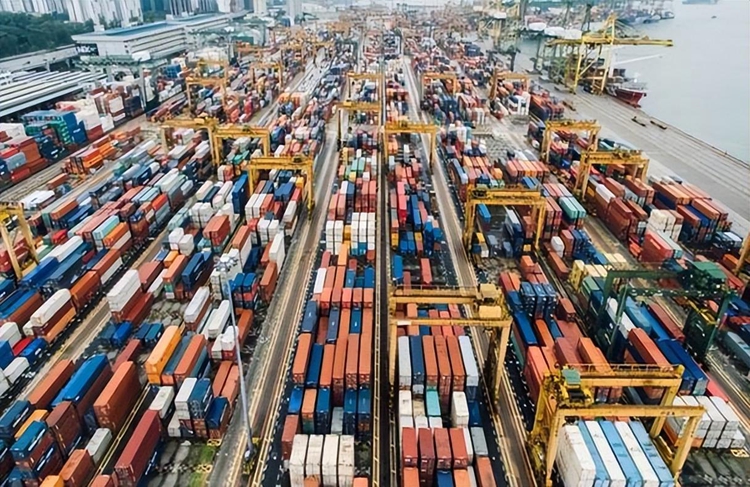Global trade has continued to show negative growth since mid-2022 to date. The United Nations Conference on Trade and Development (UNCTAD) expects total global trade to fall below $31 trillion in 2023, a decline of 5% from the record level of 2022, with trade in goods shrinking by about $2 trillion, or 7.5%, while trade in services will grow by about $0.5 trillion, or 7%. Looking ahead to 2024, the global trade outlook remains "highly uncertain and generally pessimistic" as conflicts in global hotspots continue to escalate, and the global trade landscape is increasingly influenced and constrained by geopolitical factors.
In addition to the Ukraine crisis, the Israeli-Palestinian conflict and other hot wars, the current geopolitical tensions among the major countries are more often manifested in the form of trade wars, financial wars, technological wars and coercive sanctions such as export controls, trade remedies and cyber-attacks, as well as the substitution of domestic production for offshoring and outsourcing, which has led to the transmutation of the global trade pattern. First, geopolitical tensions have lowered economic growth expectations, with continued weakness in the purchasing managers' indices of the world's major powers in 2023, a bleak outlook for industrial output, and huge differences in expectations for the economic outlook for 2024 across countries and regions, which have a direct impact on the pattern of trade; second, geopolitical tensions have amplified the uncertainty in the commodities market and exacerbated volatility in commodity prices. The decline in commodity prices became one of the major causes of the downturn in global trade in 2023; Third, geopolitical tensions disrupted global supply chains, with broader domestic industrial support policies to reduce dependence on foreign supply chains prevailing around the world in 2023, and with the Houthi forces escalating in the Red Sea operations at the end of the year, and with the significant increase in the economic and non-economic costs of global supply chain extensions; and Finally, the Geopolitical tensions have increased the use of trade restrictive measures, with a significant increase in non-tariff measures around the world in 2023, becoming a significant impediment to international trade.

Although there is no clear quantitative assessment of the cumulative impact of geopolitical conflicts on the global industrial chain, there is no doubt that the intensification of geopolitical tensions will cause market players around the world to reevaluate the relative gains and negative externalities of global trade interdependence, and to shift upstream and downstream industries to the friendly shores with good bilateral political relations, either actively or passively. International trade in high-tech technologies such as artificial intelligence, semiconductors, quantum computing, aerospace and robotics, intangibles such as R&D, design, branding and marketing, and commodities such as energy, food and raw materials are most vulnerable to geopolitical tensions. Especially since the end of 2022, countries around the world have generally shown a preference for politically aligned trading partners, and the trend of "friendly outsourcing" has become more pronounced.
In terms of geopolitical tightness, which is measured by the similarity of foreign policy stances reflected in the votes of the world's countries in the United Nations General Assembly, calculated using the trade volume in the first quarter of 2022 as the base period, the bilateral trade volume in the third quarter of 2023 between countries with high geopolitical tightness increased by 6.2%, while that between countries with average geopolitical tightness declined by 4.4%, and that between countries with very low or opposing geopolitical tightness declined by 4.4%. Bilateral trade between countries with very low geopolitical closeness, i.e., those that tend to be antagonistic, declined by 5.1 percent. In terms of trade concentration, i.e., as measured by the Herfindahl-Hirschman Index, which measures market concentration in industries, and calculated using the trade volume of the third quarter of 2022 as the base period, global trade concentration increased by 8.7% in the third quarter of 2023, i.e., there was a general decline in the plurality of trading partners, with countries converging significantly towards major trading relationships.

At the country-specific level, the Ukraine crisis, Western sanctions against Russia, and the "de-risking" of US-China trade relations have played a significant role in shaping key bilateral trade trends. In terms of bilateral trade dependence, measured as the ratio of bilateral trade between two economies to their total trade, Ukraine's trade dependence on the EU increases by 10.0%, Russia's on China by 8.0%, Kazakhstan's on the EU by 2.9%, Iraq's on China by 2.8%, Australia's on China by 2.5%, and Vietnam's on China by 2.5%, compared to the average of 2022 trade volumes. 2.5%, Vietnam to China by 2.3%, Saudi Arabia to the EU by 2.2%, and the U.S. to the EU by 1.3%; in contrast, Russia's trade dependence on the EU decreased by 6.4%, the U.S. to China by 1.8%, Vietnam to the U.S. by 1.4%, South Korea to China by 1.4%, Japan to China by 1.2%, Turkey to Russia by 1.2%, Chile to China by 1.1%, China to the U.S. by 1.0%, and the EU to Russia by 0.7%.

